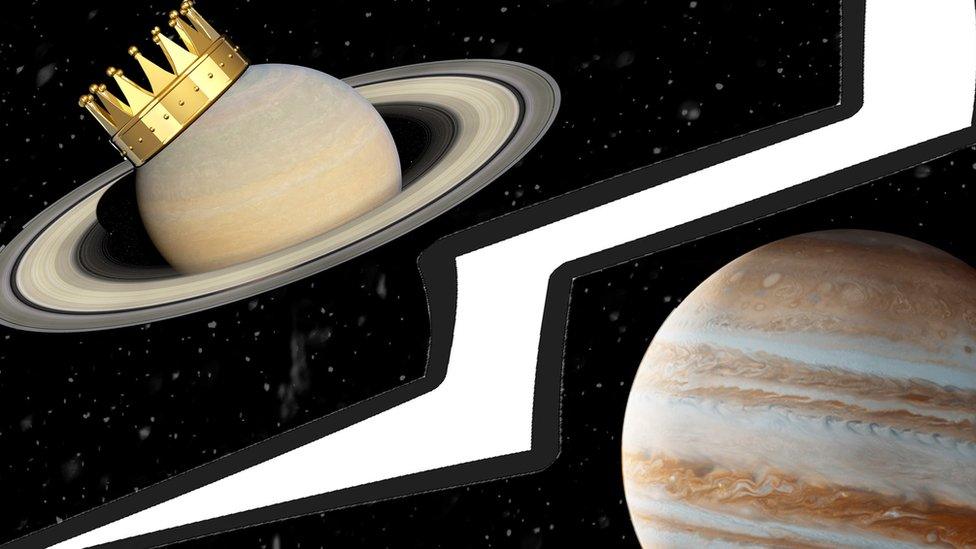Saturn overtakes Jupiter as planet with the most moons
- Published
- comments

Saturn vs. Jupiter in the 'moon race'
Saturn has once again been crowned king of the moons in our solar system.
The title has been snatched from Jupiter, who held it briefly from February 2023 after astronomers found 12 new moons orbiting the planet taking its total up to 92.
But the discovery of a further 62 moons around Saturn has flipped the script once again and it's now believed to have 145 moons in total.
That's more than all of the rest of the planets' moons in our solar system combined!
How were Saturn's moons discovered?
This image taken by Nasa's Juno spacecraft shows Jupiter with some of its moons
The new observations have come from astronomers at the University of British Columbia.
As new technologies emerge, making it easier for astronomers to study our universe, they can gather more detailed pictures of our planets.
And because Jupiter is closer to Earth than Saturn, it's been easier for scientists to look at Jupiter's moons in greater detail than Saturn's.
But Nasa's Dragonfly mission, due to launch in 2027, is hoping to make closer observations of Saturn's small outer moons.
What is a moon?
The Earth's moon
We all know Earth's moon - sometimes a sickle in the sky and sometimes a full glowing circle.
We may call it the Moon, but there are actually hundreds of moons in the solar system.
Moons are natural satellites and are usually solid. Nasa, the US government agency responsible for space exploration and technology, says most planetary moons probably formed from "the discs of gas and dust circulating around planets in the early solar system".
Moons are natural satellites which mean they orbit a planet.
Mercury and Venus don't have moons at all, while Earth has only one.
Test your space knowledge with our mega quiz...
If you cannot see the quiz, click here.
- Published27 April 2023
- Published20 April 2023
- Published15 April 2023
